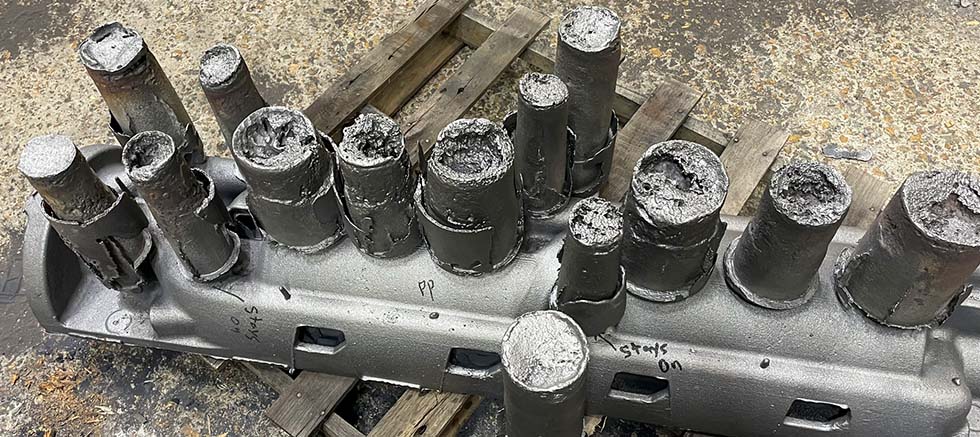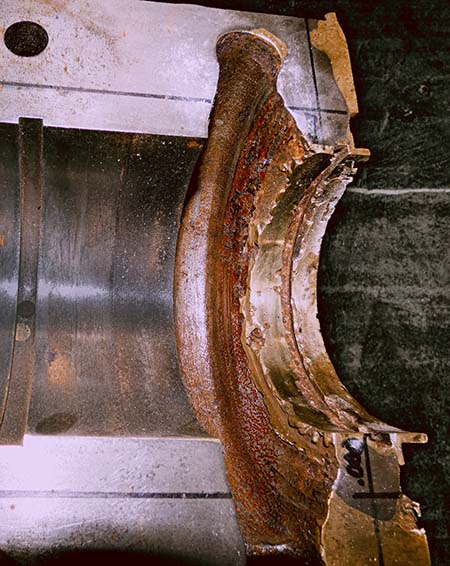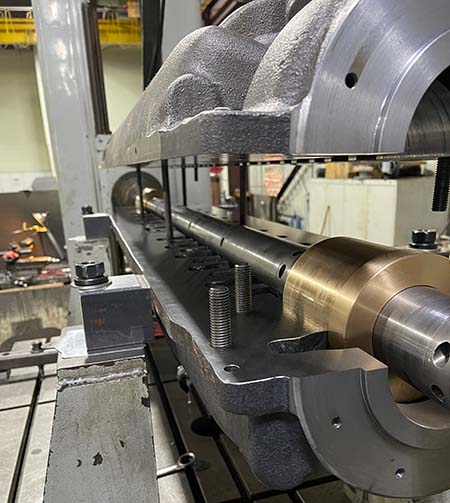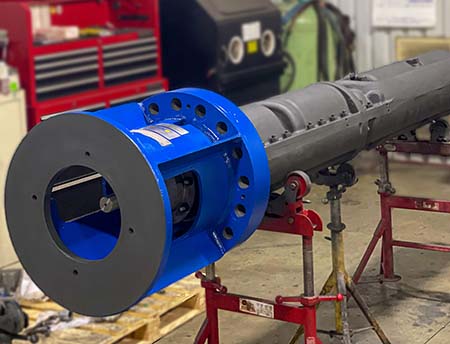
A steel mill in Colorado was using an HPD 20-stage vertical pump for a testing application. The pump was originally manufactured in the 1950s and was made predominantly of cast iron—a typical material of construction for that time period. However, contemporary manufacturing processes have made cast iron all but obsolete.

Through the years, the cast iron pump casing experienced extreme wear, leading to degradation in discharge pressure and the subsequent removal of the pump from service. After being taken offline, the pump was sent to a local pump aftermarket provider for a comprehensive inspection and analysis for repairs. Cast iron is not repairable by welding, so reclaiming the fittings and bringing them back to the correct clearances became a challenging repair obstacle. In the past, the repair process involved using bronze, which can bond to the cast iron material. However, since the last time this pump was repaired, its condition had severely degraded. The bronze had eroded and would have required extensive repair that would have exceeded the cost of a new steel casing. Therefore, the aftermarket company recommended casting a new case out of carbon steel.
The user agreed and the aftermarket company used two of its facilities—one in Colorado and one in Texas—to reverse engineer the part and recreate a new casing from carbon steel that would be a direct replacement for the existing cast iron case.

The reverse engineering process began with scanning the existing case using a laser coordinate scanning device and using that data to create a 3D model. Since the initial scan contained the existing damage and wear, the model required modification to restore the original geometry of the casing. When reverse engineering a part, the goal is to bring the part back to its original performance intent, not just to recreate the part as found, as that would be counterproductive to create a brand-new, worn-out part.
Following the reverse engineering process, machine stock was added to the model of the part. The necessary foundry allowances were also implemented, creating simulations that would be helpful for the foundry. A secondary digital 3D model was then created for this casting and sent to the foundry.
The case was cast at a steel foundry in Arkansas and was then sent to the aftermarket company’s Texas facility for machining. The split line was faced off, the line boring performed, and technicians ensured that all the critical fits were machined correctly. The part was then sent back to Colorado where it was inspected to ensure accuracy. After the new casing passed inspection, the 20-stage rotor was assembled and installed in the case, and the pump was ready to be shipped back to the user.

The Results
The aftermarket company’s technicians were able to take one of the most critical pieces of infrastructure at the user’s plant and improve upon the weaknesses that they knew existed in the pump. The re-engineered casing fit perfectly on the pump and was durable enough to last as long as the steel mill remains in service.

